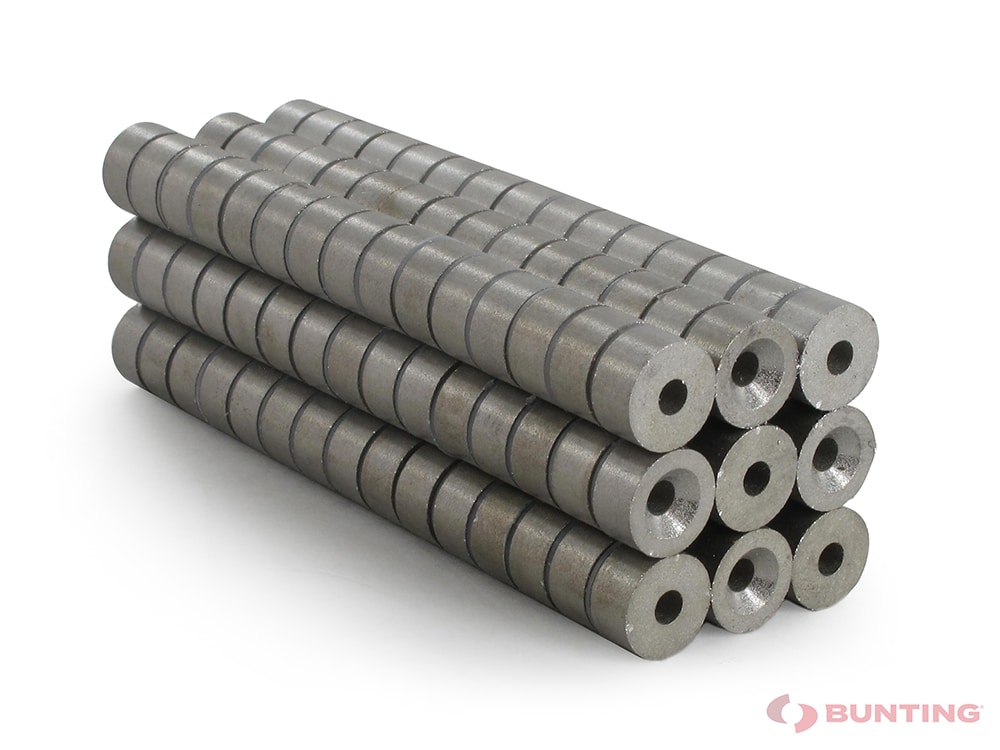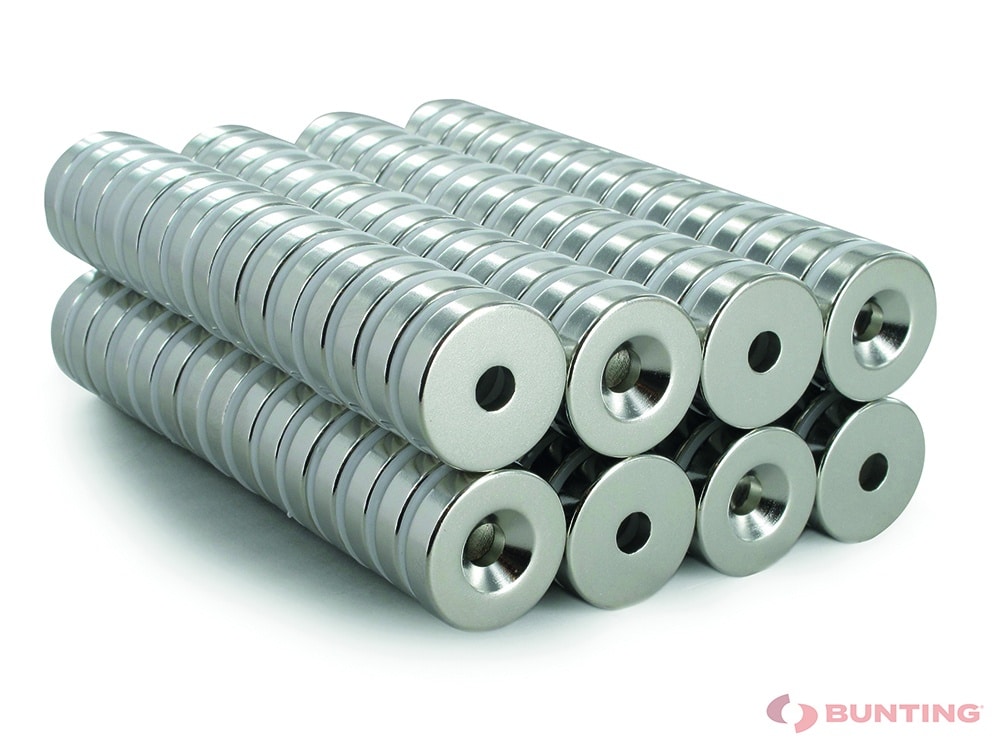Magnet Comparison: Neodymium and Samarium Cobalt Rare Earth Magnets
By Paul Fears | 21 October 2020
Neodymium Iron Boron NdFeB (i.e. Neodymium) and Samarium Cobalt SmCo are both ultra-strong rare-earth permanent magnets. Both are brittle in nature and subject to catastrophic damage if subject to severe impact (i.e. dropping). However, that is where the similarity ends and, when selecting a magnet material for a specific application, our design engineers assess each magnet’s key unique properties including:
- Maximum application temperature;
- Magnetic performance at a given temperature;
- Cost;
Samarium Cobalt Rare Earth Magnets: High Strength, High Endurance
Despite being less powerful that Neodymium, Samarium Cobalt magnets are used widely in applications for the military, aerospace, marine, and automotive industries since the 1970s. Applications in such industries are often in challenging environments, where Samarium Cobalt excels.
- Technical product information: Samarium Cobalt
Without the need for a special coating, Samarium Cobalt magnets have a strong resistance to both corrosion and oxidation. This includes a resistance to saltwater corrosion, making this magnet type ideal for marine and offshore applications.
Also, Samarium Cobalt magnets maintain a strong magnetic performance even at temperatures up to 350 °C, outperforming Neodymium once reaching 150 °C.
Neodymium Rare Earth Magnets: Powerful and Versatile
Neodymium magnets, discovered in 1982 by General Motors, are the strongest commercially available permanent magnets. The list of applications is extensive and includes motors, sensors, mobile phones and computer hard drives. There are a range of different grades to suit specific applications with the highest grade rated at 52MGOe compared with Samarium Cobalt at 32MGOe.
- Technical product information: Neodymium Magnets
Depending on the grade, Neodymium magnets are suited to maintain a good magnetic performance up to 200 ° C, with the magnetic strength only falling below Samarium Cobalt at 150 °C.
Although not naturally resistant to corrosion, Neodymium magnets are generally coated with NiCuNi for protection.
Due to the extensive use and production of Neodymium magnets, the price per unit is lower than Samarium Cobalt. However, for higher temperature applications (e.g. motors) the addition of the heavy rare earth element Dysprosium increases the intrinsic coercivity of the Neodymium Magnet, reducing any loss in magnetic performance at higher temperatures. Dysprosium is both rare and expensive and so Bunting use Grain Boundary Diffusion to diffuse the element from the surface around all of the grain boundaries. This reduces the usage of Dysprosium and therefore cost, whilst maintaining performance.
- Technical product information: Grain Boundary Diffusion Technology
Applying Grain Boundary Diffusion techniques produces improved Neodymium magnet performance at higher temperatures, often comparable to Samarium Cobalt.
Electric Vehicles and Motors
Rare Earth Magnets are a key component of a four-pole motor in an electric vehicle. The location of the motor inside the vehicle’s engine exposes the magnets to temperatures of over 180 °C. At this top temperature, the performance of Samarium Cobalt is slightly better than Neodymium.
- Technical article: Metal Recovery From Electric Vehicles
Design engineers then have to decide on whether to select Samarium Cobalt, with the magnet’s recognised performance at higher temperatures, or Neodymium, which with Dysprosium may be slightly more expensive. This example highlights the magnetic complexity of the product design.
Bunting’s magnet specialists work closely with design engineers and assist on selecting and designing the best magnetic solution for any given application.
Related Articles
Bunting designs and manufactures a wide range of magnets and magnetic assemblies. Many are bespoke for specific applications. For further information on bespoke magnet assemblies and magnet designs, please contact us via:
Phone: +44 (0) 1442 875081
Email: sales.berkhamsted@buntingmagnetics.com
Via Bunting-eMagnets for online purchase of Magnets and Magnetic Technology





